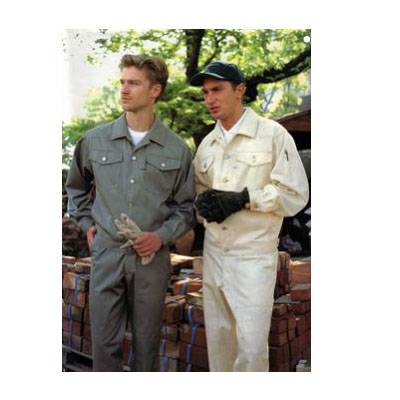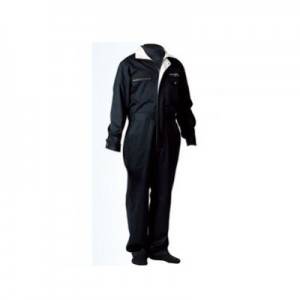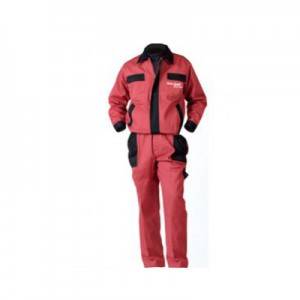Application:
Electrician, Utility Workers and any other workers with inherently thermal resistant garments for electric arc protection
Standard:
NFPA: 2112, HRC2, ATPV: 12.2cal/cm²
Home Wash & Industry Wash
Style:Coverall, Pant
Hazard Risk Category Levels
The NFPA has identified various FR hazardous risk category levels, which are numbered by severity from 1 to 4. Hazard Risk Category is the level of arc flash protection clothing you must wear to protect against a minimum level of incident energy measured in calories per centimeter sqared. Meaning, electrical equipment, depending upon the energy delivering capability, under fault conditions can cause an explosion, or arc fault of a certain level, again measured in calories per centimeter squared. That explosion can deliver a certain amount of heat to a certain distance. Each level, 0-4, is rated at a certain amount of flame resistance, again measured in cal/cm2.
The chart, based on specific job tasks, ranges from HRC 1 (which is low risk and allows for 100% treated cotton), up to HRC 4 (which is high risk and requires FR clothing with a minimum arc rating of 40). The HRC is used to determine the necessary arc rating of a garment worn during a given job task.
| Hazard RiskCategory | Clothing Description(Typical number of clothing layers is given in parentheses) | Required Minimum Arc Rating of PPE Cal/cm2 |
| FR shirt and FR pants or FR cFR shirt and FR pants or FR coveralls (1 layer)overalls (1 layer) |
44 |
|
| |
Cotton underwear plus FR shirt and FR pants (1 or 2 layers) |
8 |
| |
Cotton underwear plus FR shirt and FR pants plus FR coveralls, or Cotton underwear plus two FR coveralls (2 or 3 layers) |
25 |
| |
Cotton underwear plus FR shirt and FR pants plus multilayer flash suit (3 or more layers) |
40 |
ARC Rating Explained
A value of the energy necessary to pass through any given fabric to cause with 50% probability a second or third degree burn. This value is measured in calories/cm². The necessary Arc Rating for an article of clothing is determined by a Hazard/Risk Assessment and the resulting HRC. Usually measured in terms of ATPV or EBT. Simple put the ARC rating determines the protective characteristics of the fabric. The higher the ARC rating value the greater the protection. When the product is sold to protect workers from arcing faults, clothing manufacturer are required in indicate the ARC rating. For more info visit www.nfpa.org.
Arc Flash
An explosive release of energy caused by an electrical arc. An arc flash results from either a phase to ground or a phase to phase fault caused by such occurrences as accidental contact with electrical systems, build up of conductive dust, corrosion, dropped tools, and improper work procedures. During an arc flash, the temperature can reach 35,000° Fahrenheit, and exposure to an arc flash can result in serious burn injury and death. Every year, more than 2,000 people are admitted to burn centers with severe arc-flash burns. For more info visit www.nfpa.org.

-
Oil & Gas Field Industrial Garments
-
Oil & Gas Field Industrial Garments
-
Oil & Gas Field Industrial Garments
-
Oil & Gas Field Industrial Garments
-
Oil & Gas Field Industrial Garments
-
Flame Resistant 9.0oz Twill, 100% Cotton, 100% ...






